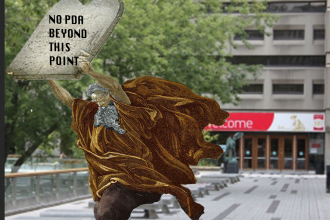Content warning: Rape, suicide
Recently, I saw the show Anastasia Trials in the Court of Women at Tuesday Night Cafe Theatre (TNC). While the show was politically relevant in itself, what this experience really brought to light was the issue of content warnings in art pieces. Despite the show’s discussion of rape and suicide, TNC chose not to indicate the show’s difficult content in any of their advertising. In the wider category of art, and especially in theatre, it is not an optional political correctness to notify audiences of possibly distressing themes, but a responsibility of the artist.
It is difficult to take a message about the importance of listening to women seriously when as an audience member, I was not given that consideration.
Refusing to offer a proper content warning in the advertising for a piece of theatre is essentially declining to acknowledge that certain audiences may find the show distressing. It is simply not worth risking an individual’s mental state for the sake of trying to be edgy or shocking. TNC did not include a content warning in any of the show’s advertising, nor was the audience given one prior to the show commencing. In a small, intimate space such as Morrice Hall, there are few ways to exit the space quietly, should you have a negative reaction to the highly emotional content of the play. This makes the warning all the more important. If a theatre company chooses to put on a show that deals with difficult topics, which I believe to be an important endeavour, there is a certain level of accountability that comes with it. It is unethical to choose to mount controversial performance pieces without taking into account the responsibilities that come with them.
In Anastasia Trials in the Court of Women the critical message was about being sensitive to the plight of other women, and failing to provide a warning of the show’s content undermined its entire message. It is difficult to take a message about the importance of listening to women seriously when as an audience member, I was not given that consideration. If a theatre company is going to “talk the talk” about female empowerment, then they should “walk the walk,” and recognize that many audience members, marginalized populations especially, could feel distressed when faced with the content they were presenting. Content warnings are easy to give and don’t at all diminish a work of art. Rather, they simply empower the audience to choose what is best to see for their own mental health.
You do not have the right as an artist to put someone’s mental health in jeopardy simply to make a piece more jarring or surprising to the audience.
By not cautioning the viewers about a show’s content, you are excluding the most vulnerable members of your audience. If theatrical companies stop putting content warnings on their pieces, it is possible that survivors of trauma may simply choose to stop attending the theatre to protect themselves from suffering more. This is obviously true of all art forms, but I’m speaking about theatre in particular because of its distinct affective qualities. There is something fundamentally different about seeing a film or a painting, and seeing real people acting out scenes only a few feet away from you. I argue for content warnings in all pieces of art, but theatre seems to be the field in which content warnings are highly necessary and also, often ignored.
You do not have the right as an artist to put someone’s mental health in jeopardy simply to make a piece more jarring or surprising to the audience. By doing something as simple as putting a small warning in a show’s advertising, or even offering a warning before the show begins, you are empowering the audience to make a decision that is best for their health. Cautioning the audience can lead to something as straightforward as someone choosing to sit near the door so they can leave if necessary, without disturbing the show. As an artist, you owe it to the people whom you want to experience your art, and you may be helping someone deal with their trauma in the process.








